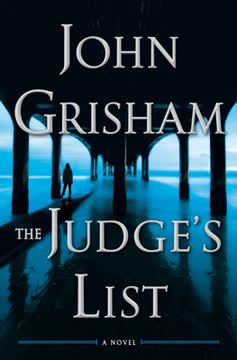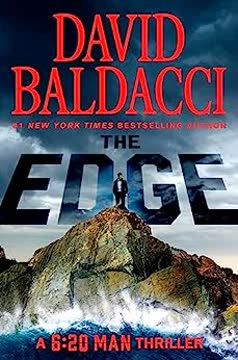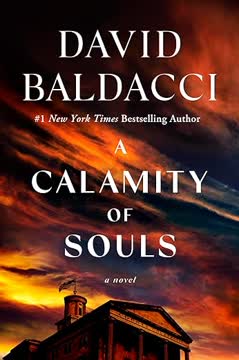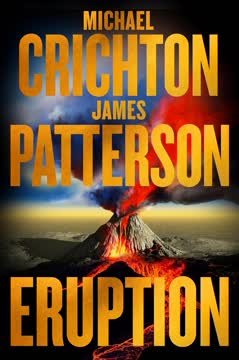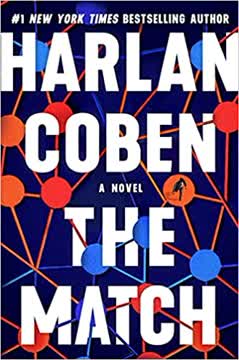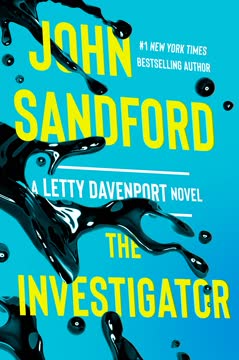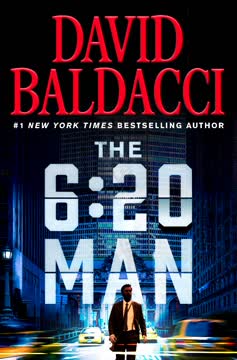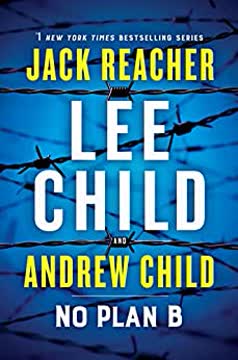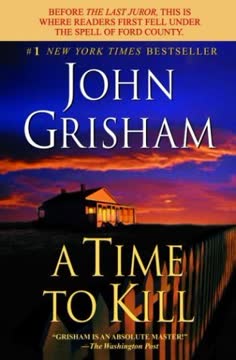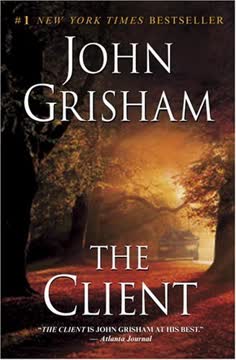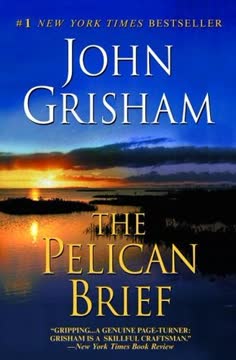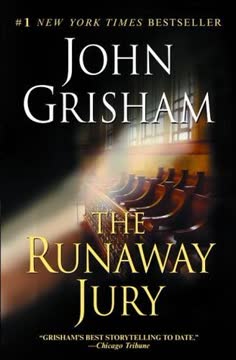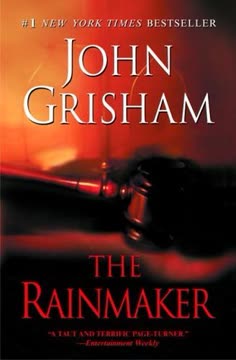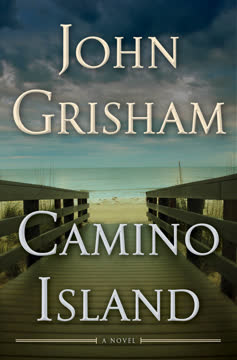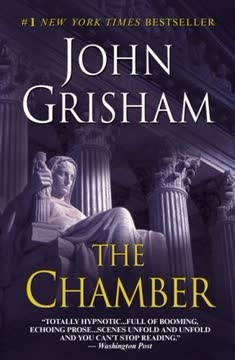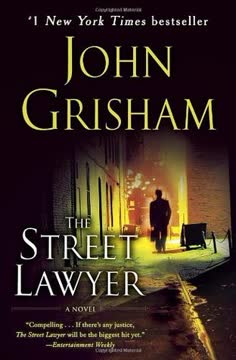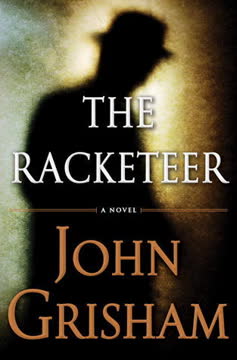Plot Summary
Anonymous Caller Sparks Investigation
Lacy Stoltz, an investigator at the Board on Judicial Conduct, receives a cryptic call from a woman using the alias "Margie." The caller insists on a face-to-face meeting, hinting at a serious issue involving a judge. Intrigued yet cautious, Lacy agrees to meet, setting the stage for a revelation that will test her professional and personal limits.
Mysterious Meeting in a Coffee Shop
At the coffee shop, Lacy encounters Margie, who is visibly anxious and insists on anonymity. Margie reveals that she has information about a judge involved in multiple murders, including her father's. Despite the lack of concrete evidence, Margie's conviction and fear are palpable, leaving Lacy torn between skepticism and the potential gravity of the allegations.
A Judge's Dark Secrets Unveiled
Margie, whose real name is Jeri Crosby, shares her extensive research with Lacy, detailing a series of murders linked to Judge Ross Bannick. Each victim had a past connection with Bannick, and all were killed in a similar manner. Jeri's meticulous investigation over two decades paints a picture of a methodical and patient killer, leaving Lacy to grapple with the possibility of a serial killer in the judiciary.
The Reluctant Investigator's Dilemma
As Lacy delves deeper into Jeri's claims, she struggles with the limitations of her role at the BJC. The agency is not equipped to handle murder investigations, yet the seriousness of the allegations compels her to act. Lacy must decide whether to pursue the case further, risking her career and safety, or to pass it on to the authorities, potentially exposing Jeri to danger.
A Web of Deception and Fear
Jeri's life has been consumed by her quest to bring her father's killer to justice. Her fear of Bannick's retribution is matched only by her determination to see him held accountable. As she shares more of her findings with Lacy, the complexity of the case grows, revealing a web of deception that spans decades and states, with Jeri at the center of a dangerous game.
The Pursuit of Justice Begins
Despite the risks, Lacy decides to take on the investigation, forming a small team within the BJC to quietly assess the allegations. As they begin to piece together the evidence, the enormity of the task becomes clear. Lacy's resolve is tested as she navigates the murky waters of judicial misconduct and murder, determined to uncover the truth and bring a killer to justice.
The Judge's Desperate Maneuvers
Judge Ross Bannick, aware that the FBI is closing in, takes extreme measures to cover his tracks. He meticulously wipes his home and office clean of fingerprints, anticipating a search warrant. His paranoia is fueled by the knowledge that a partial thumbprint could link him to the murders. Bannick's cunning and resourcefulness are on full display as he attempts to stay one step ahead of the authorities, showcasing his desperation and fear of being caught.
A Deadly Game of Cat-and-Mouse
Bannick tracks Jeri Crosby, the woman who has been investigating him for years, to a motel. He abducts her, intending to extract information about what she knows and what the authorities have discovered. Jeri's fear is palpable as she faces the man she has been hunting, realizing the danger she is in. Bannick's psychological manipulation and threats highlight his cold, calculating nature, as he tries to maintain control over the situation.
The Final Confrontation Unfolds
Lacy Stoltz, unaware of the trap set by Bannick, arrives at the motel to meet Jeri. Bannick's plan to ambush Lacy is thwarted by the unexpected presence of her brother, Gunther, who intervenes just in time. The chaotic struggle in the darkened hallway underscores the high stakes and the perilous nature of the investigation. Bannick narrowly escapes, leaving Lacy and Gunther to piece together the events and alert the authorities.
A Killer's Last Stand
Fleeing from the law, Bannick checks into a rehab facility under a false pretense. There, he orchestrates his own death, ensuring that his fingerprints are destroyed to prevent any posthumous identification. His suicide is a calculated move to evade justice, reflecting his narcissism and desire to control his narrative even in death. The FBI's discovery of his body marks the end of a long and twisted pursuit, leaving many questions unanswered.
Justice Eludes, Truth Emerges
With Bannick dead, the investigation into his crimes reaches a standstill. The FBI confirms his involvement in multiple murders, but without a trial, the full extent of his guilt remains unproven. Jeri Crosby grapples with the bittersweet reality that while Bannick can no longer harm anyone, he also evaded the justice she sought for her father's murder. The resolution is incomplete, leaving a lingering sense of injustice.
Closure and New Beginnings
In the wake of the investigation, Lacy and Jeri reflect on their experiences and the impact of Bannick's actions. Lacy decides to leave her job and start a new chapter with her partner, Allie, while Jeri contemplates a future free from the shadow of her father's killer. Both women find solace in the knowledge that Bannick's reign of terror is over, and they look forward to new beginnings, albeit with the scars of their past.
Characters
Lacy Stoltz
Lacy Stoltz is a seasoned investigator at the Board on Judicial Conduct, known for her integrity and dedication. Her encounter with Jeri Crosby challenges her professional boundaries as she grapples with the gravity of the allegations against Judge Bannick. Lacy's internal conflict between duty and justice propels her into a dangerous investigation that tests her resolve and courage.
Jeri Crosby
Jeri Crosby is a tenacious and intelligent woman whose life has been consumed by the quest to bring her father's killer to justice. Her meticulous research and unwavering determination reveal a chilling pattern of murders linked to Judge Bannick. Jeri's fear of retribution is overshadowed by her need for closure, making her both a vulnerable and formidable ally in the pursuit of truth.
Judge Ross Bannick
Judge Ross Bannick is a respected figure in the judiciary, known for his charm and intellect. However, beneath his polished exterior lies a dark history of calculated murders, each victim connected to him by past grievances. Bannick's ability to evade detection for decades speaks to his cunning and patience, making him a formidable adversary in the quest for justice.
Darren Trope
Darren Trope is a young investigator at the BJC, eager to prove himself and drawn to the intrigue of the case against Judge Bannick. His enthusiasm and tech-savvy skills make him a valuable asset to Lacy's team, as they navigate the complexities of the investigation and uncover the truth behind the judge's dark secrets.
Sadelle
Sadelle is a seasoned paralegal at the BJC, known for her encyclopedic knowledge of judicial misconduct cases. Despite her declining health, she remains a vital part of Lacy's team, offering insights and guidance as they delve into the allegations against Judge Bannick. Her experience and wisdom provide a steadying influence in the tumultuous investigation.
Gunther Stoltz
Gunther Stoltz, Lacy's brother, plays a crucial role in thwarting Bannick's plan to ambush Lacy. His timely intervention at the motel highlights his protective nature and willingness to support his sister, despite their differences. Gunther's presence provides Lacy with the support she needs during a critical moment, reinforcing the importance of family bonds.
Allie Pacheco
Allie Pacheco is Lacy's partner, both personally and professionally. His involvement in the investigation provides Lacy with a sense of security and stability. Allie's commitment to Lacy and their future together prompts him to reconsider his career, ultimately choosing to prioritize their relationship over his demanding job with the FBI.
Plot Devices
Anonymous Tip
The anonymous tip from Jeri Crosby serves as the catalyst for the entire investigation, drawing Lacy Stoltz into a web of murder and deception. This plot device sets the stage for the unfolding mystery, as Lacy must navigate the challenges of verifying the claims while protecting Jeri's identity and safety.
Dual Identity
Jeri Crosby's use of aliases and encrypted communications highlights her fear of retribution from Judge Bannick. This plot device underscores the danger she faces and the lengths she must go to protect herself while pursuing justice. It also adds layers of complexity to the investigation, as Lacy must work within the constraints of Jeri's anonymity.
The Judge's List
The concept of a list maintained by Judge Bannick, detailing those who have wronged him, serves as a central plot device. It provides a motive for the murders and a framework for the investigation, as Lacy and her team work to identify potential victims and prevent further killings. This device underscores the judge's methodical nature and the threat he poses.
Fingerprint Evidence
The discovery of a partial thumbprint on a victim's phone serves as a pivotal plot device, connecting Bannick to the murders. This evidence propels the investigation forward, highlighting the importance of forensic science in solving crimes. Bannick's efforts to destroy his fingerprints underscore his awareness of the evidence against him and his desperation to avoid capture.
Psychological Manipulation
Throughout the story, Bannick uses psychological manipulation to maintain control over his victims and those investigating him. His ability to instill fear and doubt in others is a testament to his cunning nature. This plot device emphasizes the psychological toll of his crimes on Jeri and Lacy, as they navigate the complexities of the investigation and their own emotions.
Suicide as Escape
Bannick's suicide is a calculated move to evade justice, reflecting his desire to control his narrative even in death. This plot device highlights the theme of power and control, as Bannick chooses to end his life on his own terms rather than face the consequences of his actions. His death leaves a void in the investigation, denying his victims and their families the closure they seek.
Analysis
"The Judge's List" by John Grisham delves into the complexities of justice, morality, and the human psyche. Through the lens of a gripping murder investigation, the novel explores the lengths individuals will go to seek justice and the moral dilemmas faced by those in positions of power. The story highlights the challenges of navigating a flawed judicial system and the psychological toll of pursuing truth in the face of danger. Grisham's narrative underscores the importance of perseverance and integrity, even when justice seems elusive. The book serves as a reminder of the enduring impact of unresolved trauma and the resilience required to confront one's past.
Last updated:
FAQ
Synopsis & Basic Details
What is The Judge's List about?
- A relentless pursuit of justice: The Judge's List follows Lacy Stoltz, an investigator for Florida's Board on Judicial Conduct, as she is drawn into a chilling case by Jeri Crosby, a woman who claims a sitting judge murdered her father and several others over two decades. Jeri, operating under aliases and extreme caution, has meticulously tracked the alleged serial killer, Judge Ross Bannick, for years, driven by a singular obsession to expose him.
- A high-stakes cat-and-mouse game: As Lacy reluctantly takes on the seemingly impossible task of investigating a judge for serial murder, she and her small team navigate a world of cold cases, elusive evidence, and a highly intelligent, paranoid killer. The narrative unfolds as a tense psychological thriller, with Jeri's deep knowledge of Bannick's methods and motives guiding Lacy through a dangerous investigation.
- The blurred lines of law and morality: The story explores the limitations of the justice system when faced with a cunning adversary who operates outside conventional criminal patterns. It delves into themes of obsession, revenge, and the personal toll of pursuing truth, as Lacy and Jeri risk their lives and sanity to bring a powerful, respected figure to account.
Why should I read The Judge's List?
- Unravel a unique serial killer narrative: Unlike typical crime thrillers, The Judge's List presents a serial killer who operates with extreme patience and a unique motive: revenge against those who have slighted him, often years or decades later. This unusual Judge Ross Bannick motivation adds a compelling psychological layer to the suspense.
- Experience a deep dive into obsession: The novel offers a profound exploration of Jeri Crosby's two-decade-long obsession with finding her father's killer, showcasing the immense personal sacrifice and meticulous dedication required for such a solitary quest. Her journey highlights the emotional and psychological toll of unresolved trauma.
- Witness a Grisham novel with a fresh twist: While retaining John Grisham's signature legal thriller style, this book ventures into darker, more psychological territory, focusing less on courtroom drama and more on the investigative process and the chilling mind of a killer. It provides a compelling analysis of The Judge's List that deviates from his usual formula.
What is the background of The Judge's List?
- A fictionalized judicial oversight system: The novel is set within the fictional "Board on Judicial Conduct" (BJC), which Grisham notes in his author's note does not exist in Florida in this form, though the Judicial Qualifications Commission does. This allows for a narrative exploration of a state agency with limited resources and jurisdiction attempting to tackle a crime far beyond its usual scope.
- Exploration of cold cases and forensic limitations: The story implicitly highlights the real-world challenges of solving cold cases, particularly those spanning multiple jurisdictions and lacking traditional forensic evidence. Bannick's meticulousness and knowledge of police procedures underscore how difficult it is to link seemingly unrelated crimes without a dedicated, cross-jurisdictional investigation.
- Themes of power and societal facade: The book delves into the unsettling idea of a respected public figure, a judge, harboring a monstrous secret. This explores the societal background where status and reputation can mask profound depravity, making it difficult for authorities and the public to suspect wrongdoing.
What are the most memorable quotes in The Judge's List?
- "Murder.": This single word, uttered by Jeri Crosby in Chapter 2, is a pivotal moment that shatters Lacy's mundane routine and immediately elevates the stakes of the entire narrative. It's a stark, shocking revelation that sets the terrifying premise of the book.
- "He's a sick man but he puts up a good front. Church, country club, stuff like that. He's active in the local bar, president of a historical society, even fancies himself as an actor with a county thespian group.": This description of Judge Bannick in Chapter 6, provided by Jeri, perfectly encapsulates the chilling duality of his character – a respected pillar of the community masking a depraved serial killer. It highlights the themes in The Judge's List of hidden evil and societal deception.
- "I've lived in your miserable life for so long and I never dreamed I would one day be able to have a chat like this and tell you what a miserable scumbag I think you are. You're a coward. Your crimes took no courage.": Jeri's defiant outburst to Bannick in Chapter 36, during her abduction, is a powerful culmination of her decades-long obsession. It's a raw, emotional moment where she finally confronts her tormentor, revealing the depth of her hatred and the psychological toll of her quest.
What writing style, narrative choices, and literary techniques does John Grisham use?
- Lean, procedural prose with escalating tension: Grisham employs his characteristic straightforward, unadorned prose, focusing on clear plot progression and investigative details. This John Grisham writing style creates a sense of realism and urgency, allowing the chilling nature of the crimes and the killer's methodical approach to build tension organically rather than through ornate language.
- Alternating perspectives and narrative misdirection: While primarily following Lacy Stoltz, the narrative frequently shifts to Jeri Crosby's meticulous research and, crucially, to Judge Bannick's internal monologues and actions. This narrative choice provides a unique, omniscient view of the killer's mind, revealing his paranoia, cunning, and twisted justifications, often creating dramatic irony as the reader knows more than the investigators.
- Subtle foreshadowing and thematic echoes: Grisham uses seemingly minor details and recurring motifs to foreshadow future events and reinforce central themes. For instance, Lacy's initial boredom with her job and her desire for a "pinnacle" case (Chapter 4) subtly foreshadows the extraordinary and dangerous nature of the Bannick investigation, while the repeated mention of the "double clove hitch" knot serves as a chilling symbolism in The Judge's List of Bannick's signature and his Boy Scout past.
Hidden Details & Subtle Connections
What are some minor details that add significant meaning?
- BJC's crumbling infrastructure: The initial description of the Board on Judicial Conduct's "twenty years old" phone system, "ridiculous" turnover, and "chopped" budget (Chapter 1) subtly establishes the agency's weakness and isolation. This background detail highlights the immense challenge Lacy faces, as she's forced to tackle a serial murder case with severely limited resources, making her eventual commitment even more significant.
- Lacy's "yield sign" memory: Lacy's daily encounter with a yield sign that triggers a flashback to her car crash and Hugo Hatch's death (Chapter 4) is a subtle callback to her past trauma. This seemingly throwaway detail underscores her lingering psychological scars and caution, providing a deeper understanding of her reluctance to engage in another high-stakes, dangerous investigation, yet also her underlying resilience.
- Bannick's "other chamber" as a psychological refuge: The detailed description of Bannick's hidden, soundproof, and heavily alarmed "Vault" (Chapter 21) is more than just a plot device for hiding evidence. It symbolizes his extreme paranoia and fractured psyche, revealing his need for absolute control and isolation from the world he judges. It's a physical manifestation of his internal compartmentalization and hidden depravity.
What are some subtle foreshadowing and callbacks?
- Jeri's knowledge of Darren's photo-taking: In Chapter 1, Jeri immediately calls out Darren Trope for taking her picture, even presenting her own "mug" shot. This subtle detail foreshadows her extensive surveillance capabilities and deep understanding of investigative tactics, hinting at the meticulous, almost professional level of her own "stalking" of Bannick long before Lacy fully grasps it.
- Bannick's early political defeat: The newspaper article detailing Bannick's landslide defeat in his first political campaign due to a "real estate developer" controversy (Chapter 3) subtly foreshadows his deep-seated need for revenge and control. This early humiliation, though seemingly minor, sets a precedent for his later, more violent reactions to perceived slights, linking his public and private personas.
- The recurring "double clove hitch" knot: Jeri's repeated, precise description of the "double clove hitch" knot used in the strangulations (e.g., Chapter 6, 17) serves as a chilling callback to Bannick's Boy Scout past, which is later revealed as the source of his initial trauma with Thad Leawood. This specific detail acts as a unique symbolism in The Judge's List, a signature that links all the murders and hints at the killer's origins.
What are some unexpected character connections?
- Lanny Verno's past altercation with Bannick: The discovery that Lanny Verno, one of Bannick's later victims, had a court case against Bannick years prior (Chapter 13) is a crucial, unexpected connection. This reveals Bannick's long memory for grievances and his extreme patience, showing that even a minor legal dispute could land someone on his deadly "list."
- Bannick's "harem" of affluent women: The revelation of Bannick's carefully curated "harem" of rich, single women (Chapter 25) is an unexpected detail that adds complexity to his character. It highlights his manipulative social skills and his ability to maintain a facade of normalcy and charm, while also subtly hinting at his deeper issues with intimacy and control, especially given his alleged impotence.
- The accidental victim, Mike Dunwoody: The fact that Mike Dunwoody was an entirely accidental victim, killed simply for being in the wrong place at the wrong time (Chapter 8), is a stark and unexpected deviation from Bannick's usual revenge-driven pattern. This detail adds a layer of moral ambiguity to Bannick's character, as he expresses a rare, albeit fleeting, moment of regret for killing an "innocent" person, contrasting with his cold-blooded pursuit of his "list."
Who are the most significant supporting characters?
- Kenny Lee (KL Data): Jeri's anonymous "mad scientist" source (Chapter 11), Kenny Lee, is crucial as he provides the raw, unfiltered crime data that allows Jeri to identify patterns and connect seemingly unrelated murders across states. His role as a detached, data-driven expert highlights the power of information in solving cold cases, even when official channels fail.
- Sadelle: The veteran paralegal at BJC (Chapter 7), Sadelle, despite her declining health, serves as the institutional memory and moral compass for Lacy's team. Her knowledge of BJC's past cases, including anonymous complaints, provides crucial procedural guidance and a sense of continuity in a chaotic agency, while her dry wit offers moments of levity.
- Norris Ozment: The former Pensacola police officer (Chapter 14) who remembers the Lanny Verno/Ross Bannick altercation is a seemingly minor character whose memory provides a vital, direct link between Bannick and one of his victims. His casual recollection, later exploited by Bannick, underscores how easily crucial information can be overlooked or dismissed by authorities.
Psychological, Emotional, & Relational Analysis
What are some unspoken motivations of the characters?
- **Lacy's subconscious desire for
Review Summary
The Judge's List received mixed reviews, with many praising Grisham's storytelling and the intriguing premise of a judge as a serial killer. Readers appreciated the strong female characters and the cat-and-mouse game between the investigator and the killer. Some found the pacing slow at times and the ending unsatisfying. Critics noted that while not Grisham's strongest work, it remains an entertaining legal thriller. Overall, fans of Grisham's writing style and legal suspense novels found it enjoyable, while others felt it lacked the depth of his earlier works.
Similar Books
Download PDF
Download EPUB
.epub digital book format is ideal for reading ebooks on phones, tablets, and e-readers.
